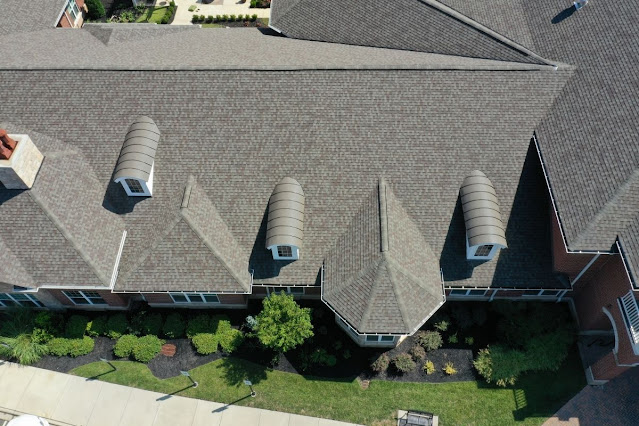Best Insulation for Attic: A Comprehensive Guide
Maximizing Energy Efficiency and Comfort
Insulating your attic is one of the most effective ways to enhance your home's energy efficiency and comfort. Proper attic insulation can significantly reduce energy bills, improve indoor air quality, and extend the lifespan of your HVAC system. In this blog post, we will explore the best insulation for attic, detailing their benefits, drawbacks, and ideal applications.
Why Insulate Your Attic?
Attic insulation plays a crucial role in maintaining a consistent indoor temperature. It acts as a barrier to prevent heat from escaping during winter and keeps your home cooler in the summer by reducing the amount of heat that enters from the roof. This thermal resistance is measured by R-value, with higher values indicating better insulation performance.
Types of Attic Insulation
1. Fiberglass Batt Insulation
Fiberglass batt insulation is one of the most common and cost-effective options. It consists of flexible sheets made from tiny glass fibers and is available in various thicknesses.
Pros:
- Easy to install, especially for DIY projects.
- Widely available and affordable.
- Good thermal performance.
Cons:
- Requires precise installation to avoid gaps and ensure effectiveness.
- Can be irritating to skin and lungs during installation.
Ideal For:
- Homeowners looking for an affordable and straightforward insulation solution.
2. Blown-In Fiberglass Insulation
Blown-in fiberglass insulation involves using a machine to blow loose fiberglass fibers into the attic space, filling gaps and covering irregular areas.
Pros:
- Excellent coverage, especially in hard-to-reach areas.
- Can be layered over existing insulation.
Cons:
- Requires specialized equipment for installation.
- Can settle over time, reducing its effectiveness.
Ideal For:
- Attics with irregular shapes or obstructions.
3. Spray Foam Insulation
Spray foam insulation is a high-performance option that expands upon application, creating an airtight seal.
Pros:
- Superior air sealing capabilities.
- High R-value per inch.
- Reduces the need for additional air sealing measures.
Cons:
- Higher cost compared to other insulation types.
- Professional installation is usually required.
Ideal For:
- Homes with high energy efficiency goals and budgets to match.
4. Cellulose Insulation
Made from recycled paper treated with fire retardants, cellulose insulation is an eco-friendly choice.
Pros:
- High recycled content, making it environmentally friendly.
- Good thermal and sound insulation properties.
- Effective at filling gaps and voids.
Cons:
- Can settle over time, which may require top-ups.
- Potential for mold growth if exposed to moisture.
Ideal For:
- Homeowners seeking a green insulation option.
Factors to Consider When Choosing Attic Insulation
1. Climate and R-Value Requirements
Different climates require different R-values for optimal insulation performance. Colder climates typically need higher R-values, while milder climates may get by with lower values. Consult local building codes or an insulation professional to determine the appropriate R-value for your region.
2. Attic Configuration
The layout and accessibility of your attic can influence your choice of insulation. Blown-in insulation is ideal for irregular spaces, while batt insulation is suitable for attics with standard joist spacing and few obstructions.
3. Installation Process
Consider whether you plan to install the insulation yourself or hire a professional. Some insulation types, like fiberglass batts, are more DIY-friendly, while others, like spray foam, typically require professional installation.
4. Budget
Insulation costs can vary widely. While some options like fiberglass batts are budget-friendly, others like spray foam can be significantly more expensive but offer superior performance. Weigh the initial cost against long-term energy savings to determine the best investment for your home.
How to Install Attic Insulation
1. Preparing the Attic
Before installing insulation, it's essential to prepare the attic space. Ensure all air leaks are sealed, especially around vents, chimneys, and electrical conduits. Clear the attic of any debris and make any necessary repairs to the roof and attic floor.
2. Safety Measures
When handling insulation materials, wear appropriate protective gear, including gloves, goggles, and a mask. Fiberglass and other insulation materials can be irritating to the skin and respiratory system.
3. Installing the Insulation
- Fiberglass Batts: Roll out the batts between the joists, ensuring they fit snugly without compressing the material. Cut batts to fit around obstructions and fill any gaps.
- Blown-In Insulation: Use a blower machine to distribute the insulation evenly across the attic floor. Ensure a consistent depth for uniform coverage.
- Spray Foam: Apply the foam using a spray gun, allowing it to expand and fill all gaps and cracks. This method requires careful application to avoid over-expansion.
- Cellulose: Similar to blown-in fiberglass, cellulose is blown into the attic space, ensuring even coverage and filling all voids.
Maintaining Your Attic Insulation
Regular maintenance ensures your attic insulation remains effective over time. Check for signs of settling, moisture damage, or pest infestation periodically. Address any issues promptly to maintain optimal insulation performance and prevent energy loss.
Conclusion
Choosing the best insulation for your attic depends on various factors, including your climate, attic configuration, budget, and installation preferences. Each insulation type offers unique benefits and considerations, making it essential to evaluate your specific needs carefully. Investing in quality attic insulation not only enhances your home's energy efficiency but also contributes to a more comfortable living environment. For homeowners looking to complement their attic insulation with a comprehensive energy-saving approach, considering professional roof installation can further enhance the overall performance and longevity of your home.
By selecting the right insulation and ensuring proper installation, you can enjoy the benefits of a well-insulated attic for years to come.




Comments
Post a Comment